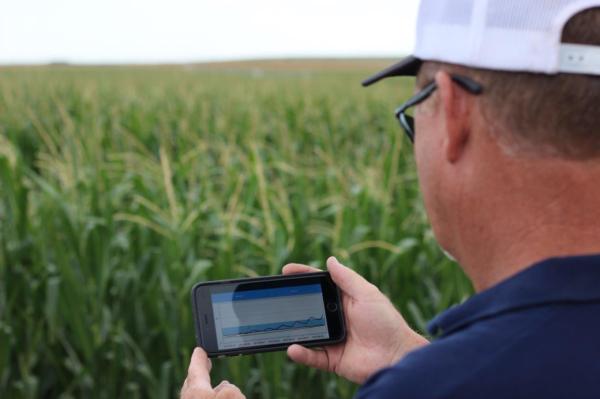Drought one year. Flooding the next.
If we’ve learned anything in the agriculture industry in recent years, it’s that climate change and extreme weather patterns are the new reality — and all of us have to plan accordingly to help ensure the safety of our food supply. Developers included.
The plan to keep the agricultural industry thriving now includes the tech sector, with more and more technology and software being adopted in the field to help farmers produce more food in the face of today’s climate and industry challenges.
One such challenge in recent years has been making sense of the avalanche of data precision agriculture technology is churning out via in-field sensors, weather stations, satellites and GPS monitoring and mapping tools.
In an attempt to make some of those data sources more actionable and user-friendly for the ag industry, the U.S. Department of Agriculture has partnered with Microsoft to launch the “Innovation Challenge,” a hackathon that runs through Oct. 27 and challenges developers to create applications that leverage new publicly available data from the USDA.
The hackathon is being hosted by Devpost, an online community and competition platform comprised of more than 400,000 software developers, and leverages data sets hosted on Microsoft’s Azure cloud-computing platform. The event is also sponsored by agtech partners Hortau and BranchFood.
“What I think makes the challenge great is that we are working to bring new minds to the problem of ensuring a resilient food supply,” said Lucas Joppa, an environmental scientist at Microsoft. “The technology and developer communities might not have a deep background in agriculture, but we believe that they have important contributions to make through what they do best — including data analytics, recommendation and prediction services and visualizations. By bringing together some of the key USDA data sets into one Farm Data Dashboard, we hope to have reduced some of the data discovery pain for our participants and let them move more quickly into building useful applications and services.”
The USDA is making much of this data, part of its Agricultural Statistical Service (NASS) and Economic Research Service (ERS), available to the public for the first time.
NASS, for example, has opened up access to its CropScape and VegScape APIs. CropScape provides geospatial data through annual land cover data sets, while VegScape is a vegetative condition database compiled from satellite data.
Those data sets are considered a jumping off point for app developers, who are encouraged to incorporate other relevant data points, which could include sources from other government agencies such as the National Oceanic and Atmospheric Administration (NOAA), the National Aeronautics and Space Administration (NASA) or the United States Geological Survey (USGS).
Agriculture is at the crossroads of some of the world’s most critical challenges. Dr. Ann Bartuska, USDA Deputy Under Secretary for Research, Education and Economics
“The President launched the Climate Data Initiative to leverage the government’s massive amounts of data to develop new and different ways to address system vulnerabilities to climate change, including vulnerabilities of the food supply,” said Dr. Ann Bartuska, USDA Deputy Under Secretary for Research, Education and Economics. “Through our partnership with Microsoft, USDA can make the large amounts of agricultural data that we’ve collected over the last 100 years readily available to the private sector and empower developers to turn this data into innovative tools and solutions for our stakeholders. It is a way for us to connect the dots across different sources like we’ve never done before.”
The challenge, which supports President Obama’s White House Climate Data Initiative, offers $60,000 in prizes for applications that leverage the USDA data to provide actionable insights into the U.S. food system for farmers, agriculture businesses, scientists or consumers. Microsoft is also granting cloud-computing awards to aid university researchers and students who take part in the challenge.
Submissions will be taken through October 27. After a short judging period (November 4-17), winners will be announced December 2.
“The era of climate-driven agriculture has arrived,” Bartuska added. “Agriculture is at the crossroads of some of the world’s most critical challenges: climate change, sustainable food production, providing clean and abundant water, renewable energy, and improving human health. Those challenges are immense, especially when you consider that we must meet the food needs of a world population that is expected to top 9 billion people by mid-century. To meet these challenges, we must take advantage of knowledge from all sectors, and encourage new and innovative thinking.”
